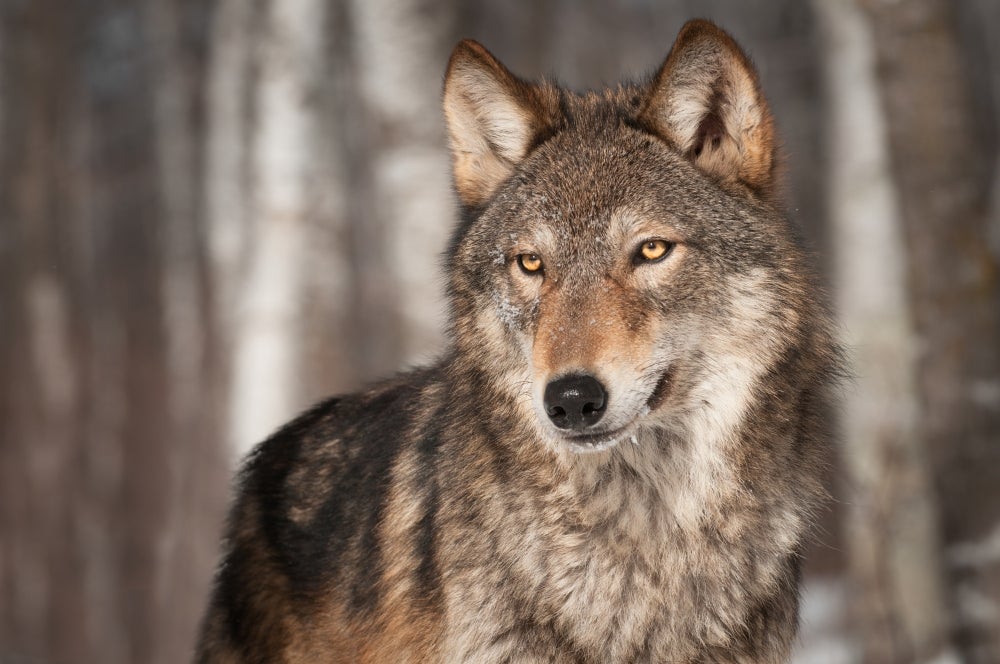
Reciprocal Effects

When gray wolves were reintroduced to Yellowstone National Park, they sparked a resurgence of aspen trees.
Young aspens had been devastated and all but disappeared, courtesy of elk, in what’s known as a trophic cascade — an ecological process that begins at the peak of the food chain and ripples downward. At Yellowstone, that particular cascade goes from wolves to elk to aspen. The absence of the wolves, an apex predator, had triggered the process. Their return began to unwind it.
Yellowstone is a classic — but not singular — example of a predator-initiated trophic cascade. Other catalysts exist, including infectious agents such as parasites and pathogens.
And that’s where UC Santa Barbara National Science Foundation postdoctoral research fellow Julia Buck comes in. Parasites and pathogens are her specialty. After a chance meeting at UC Santa Barbara with co-author William Ripple of Oregon State University, who described trophic cascades in Yellowstone soon after the wolves were reintroduced, Buck surveyed the literature for studies of cascades initiated by parasites and pathogens.
She curated 47 examples and categorized them into three different types, including a new paradigm not applicable to predator-prey cascades. The findings appear in the journal Trends in Ecology & Evolution.
“Our analysis found a hybrid type of indirect effect,” Buck said. “The wolves initiated a consumptive density-mediated indirect effect on aspen by reducing the population of elk. They also caused a nonconsumptive trait-mediated indirect effect by scaring the elk so the ruminants ate less, which also contributed to tree recovery. But because infectious agents can be less than fully and immediately lethal, they can simultaneously consume their hosts and change their behavior, initiating what we call a consumptive trait-mediated indirect effect.”
Buck found this new category applied to 45 percent of the infectious agent case studies she discovered in her review. Case in point: larval trematodes — parasitic flatworms — that infect snails. Once infected, the snails lose their appetite and reduce their grazing, which in turn permits algae to flourish.
“I found three trematode-snail-algae cascades; in one case, infected snails ate less algae than their uninfected counterparts, and in two cases, they ate more,” Buck explained. “One of the insights from this paper is that the effects can go both ways.”
By far, the most prevalent category was density-mediated cascade, in which the consumer kills its victim. One such example is rinderpest, a virus that infects wildebeest in Africa’s Serengeti. The pathogen controls the wildebeest population, thereby benefiting the grasses they eat.
“We only found out about this trophic cascade when rinderpest was eliminated from the population,” Buck explained. “Then wildebeest populations exploded and devastated the grasses. This led to other effects like fewer fires and more trees. We call these knock-on effects because they spin off from the main chain.”
Fear-based effects were rare, but Buck found a couple of case studies. Phorid flies, for instance, need not infect their ant hosts to affect their behavior. Merely buzzing around the industrious insects causes panic and a reduction in appetite. As a result, the bugs the ants would otherwise consume are spared.
Certain trophic cascades can begin with a predator or an infectious agent. Take sea urchins, for example. Sea otters feast on urchins, which in turn allows kelp to thrive; similarly, a bacterial pathogen can control sea urchins, which also benefits kelp.
“Near the northern Channel Islands in California, predators like sea otters and lobsters were once common but are now scarce, thanks to extirpation and overfishing. Their prey — sea urchins — became so dense that in the early 1990s a bacterial pathogen caused an epidemic among sea urchins that benefited kelp,” Buck noted. “This is a good example of a predator-induced cascade being replaced by a pathogen-induced cascade.
“Even though hundreds of cases of predator-induced cascades have been demonstrated, top-down regulation by parasites is probably more common because parasites are the most common consumers on Earth,” she added. “As we continue to lose top predators from ecosystems, we might see this kind of replacement more often.”



